|
August 26th Meeting
"Box Fundamentals"
|
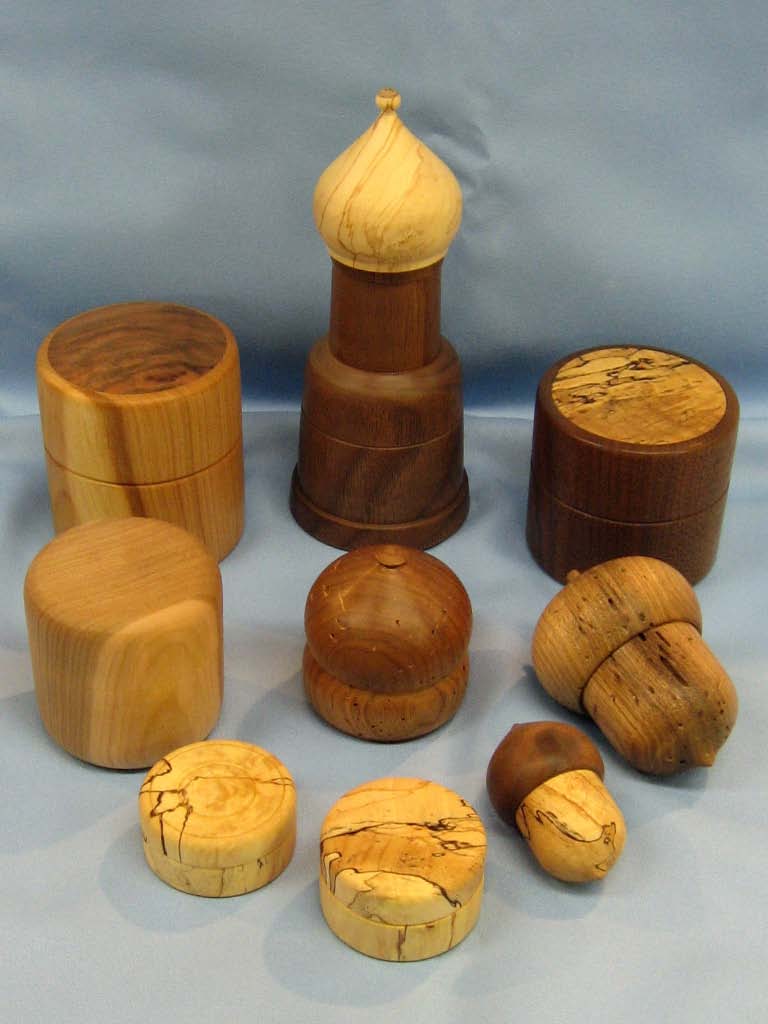
|
|
Irv Miller Presents
|
|
To a woodturner, a box is a round container with a lid. For a lid to fit well, a box is best
turned with wood dried to a moisture content consistent with the average relative humidity of the place where it will reside, and with the grain oriented
parallel to the axis of the lathe.
After making a few chips fly to get the attention of the audience, Irv handed out a sheet with
Video, Text, and Web references on one side, and, on the other side, a 22-step order in
which most boxes are turned. He suggested that the group use the references to learn how the Gurus turn boxes, and not listen to him.
He then preached ad nauseum on box design, tools, fixing box blanks in the lathe, truing a blank, and hollowing, stating that the most crucial operation is
lid fitting.
Irv then went back to chip-making mode and demonstrated many different ways to do each of the operations of truing up a blank,
squaring off an end, and hollowing, assigning each of the many demonstrated methods and associated tools to the appropriate Guru listed in the reference sheet.
However, time ran out before the most crucial step, lid fitting, could be demonstrated, leaving that operation to the interested student to research using the references.
Butternut blanks were then handed out to the attending members with the challenge to make boxes and bring them to the picnic next Thursday. Attendees at the picnic will
vote, and the winner will receive the traveling Bill Beckman Golden Corn Ear trophy and badge.
|
|
|
September 2nd Picnic Meeting
"Annual Challenge Championship"
|
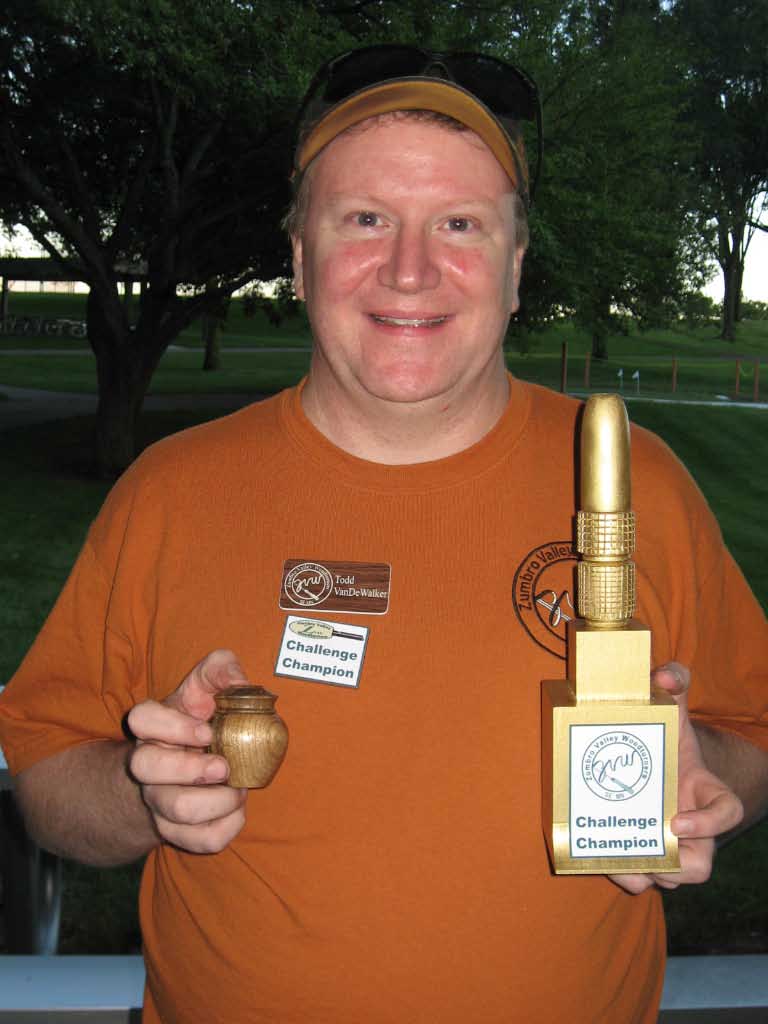
|
|
Todd VanDeWalker was the winner of the box challenge thrown out at the August meeting and took home the Bill Beckman Golden Corn Ear traveling trophy and badge.
|
|
|
October 28th Meeting
"Christmas Ornaments"
|
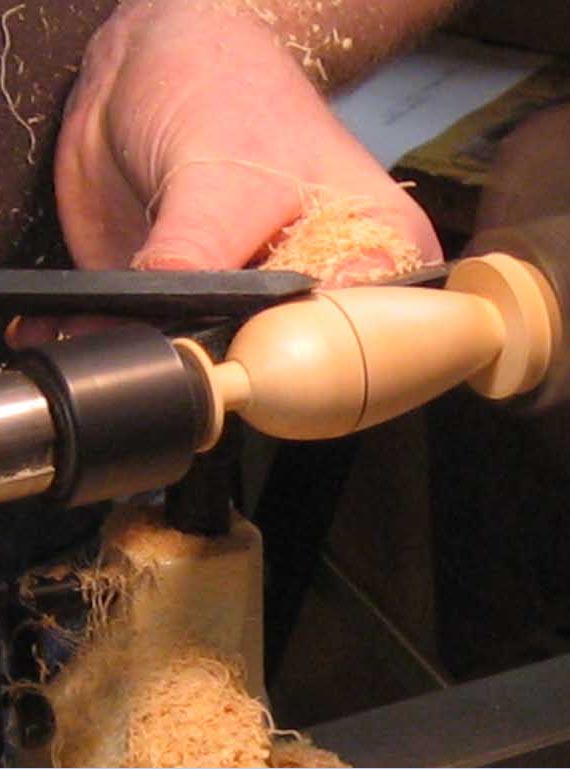
|
|
Todd VanDeWalker Presents
|
|
The above photo shows Todd creating a Christmas tree light bulb.
The bulb is turned from basswood. It will be dyed with an aniline dye and fitted with a brass base made from brass tubing purchased from a hardware store.
The meeting was well attended. Many members brought ornaments to describe and discuss. Some were simple tops and bells that could be
quickly turned in dozen quantities and then decorated brightly and efficiently with metallic spray paint. Others, very elaborate, included multi-part hollow balls
with finely turned finials; some made with a variety of very decorative woods, others brightly hand-painted.
|
|
|
November 18th Meeting
"Inlay"
|
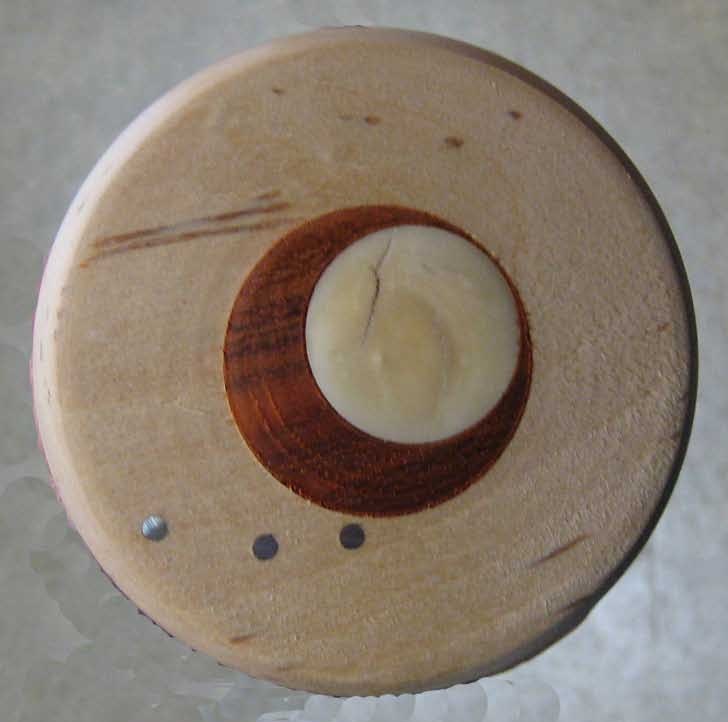
|
|
Mel Turcanik Presents
|
|
The above photo shows a background disc of birch inlayed with padauk(reddish brown), tagua nut (off-white) and solder (silver).
The padauk is centered, the tagua is off center, and the silver is more or less randomly positioned.
Mel first turned the paduak and tauga disks. Then he turned the birch disk with a centered recess. Careful sizing is the secret here.
He used cyanoacrylate glue to secure the paduak to the birch, bored holes with a drill press for the solder, glued the solder in place,
remounted the assembly, and turned it to its almost-final shape. Next he off-centered the turning and turned a recess for the tagua, glued it,
and returned the assembly to its original center to finalize its shape.
Inlays are especially nice on box tops, but can enhance any turning. and can be done in many different ways.
Below is an example of two ring inlays on a top that were done by Mel with green polymer clay pressed into ring recesses, baked in an oven, re-mounted, and
turned to completion.
|
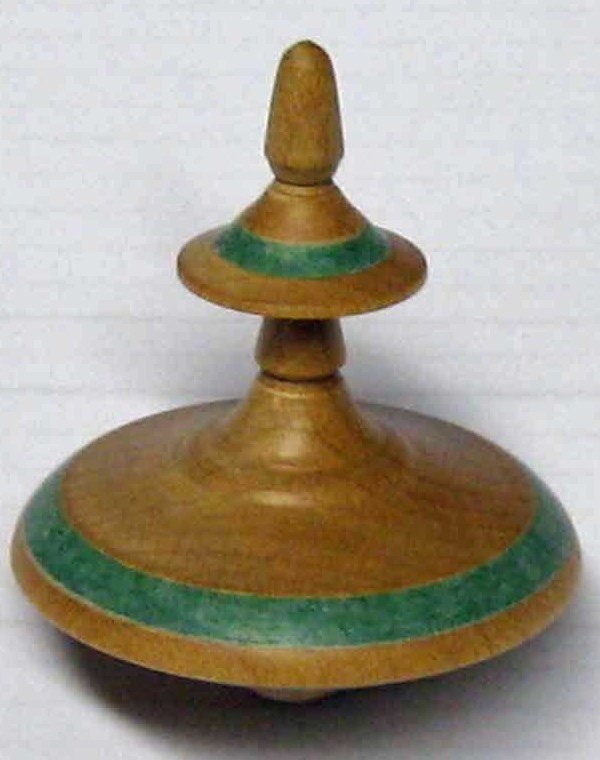
|
|